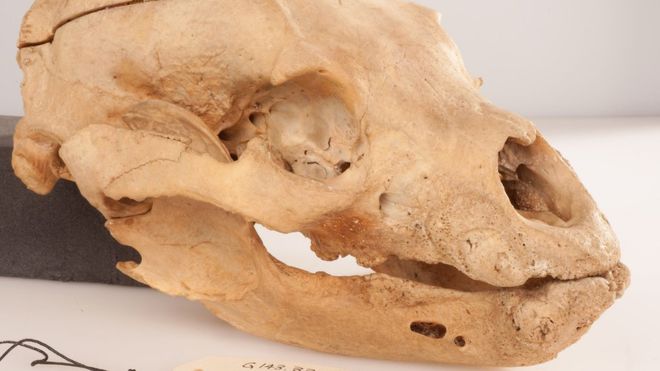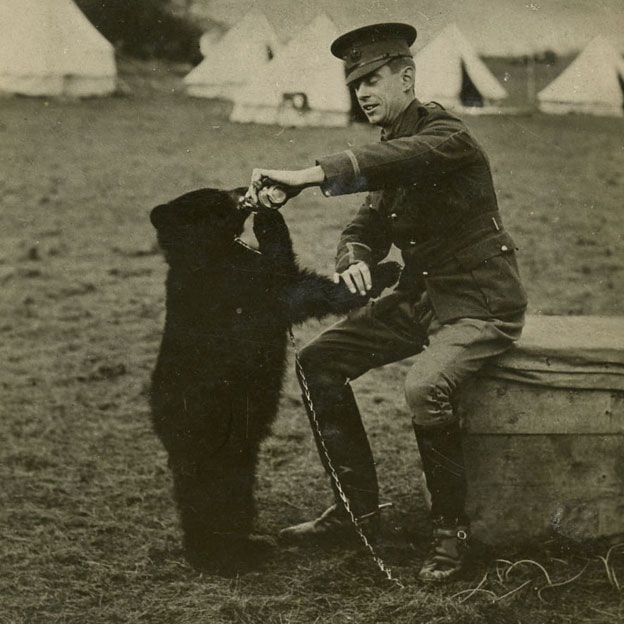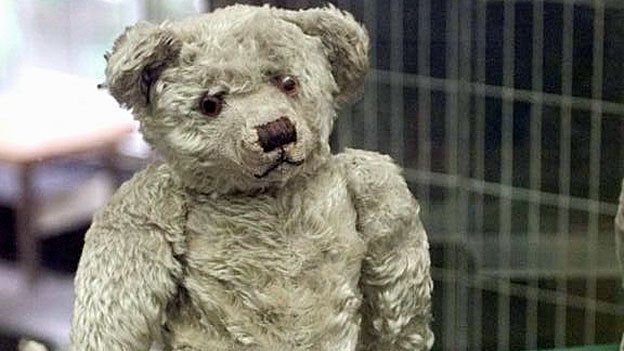Art & Exhibitions
Real-Life Winnie-the-Pooh Skull on View at London Museum
It's the first time it has been displayed publicly.

It's the first time it has been displayed publicly.

Sarah Cascone

The skull of Winnie-the-Pooh, the inspiration for A.A. Milne’s beloved children’s book, is on display at London’s Hunterian Museum, the first time it has been exhibited publicly.
One of the world’s most popular children’s characters, Winnie-the-Pooh has also found success on the auction block, where illustrations by E. H. Shepard, the original illustrator of Milne’s Winnie-the-Pooh (1926), have sold for record prices. An ink drawing by Shepard from the series set the record for the most expensive book illustration at auction in December 2014 at Sotheby’s London, fetching £314,500 ($493,000).

Winnipeg, the real-life Winnie-the-Pooh, with her owner, Canadian veterinarian and solider Harry Colebourn.
Photo: Lindsay Mattick.
Winnie was based on the regimental mascot of the Canadian Army Veterinary Corps during World War I, and her full name was Winnipeg. She arrived in the UK in 1914 with the regiment and her owner, veterinarian Harry Colebourn, and stayed behind when they were sent to France.
Winnie soon became a major attraction at the London Zoo. “People would come to the zoo specifically to meet Winnie, to watch her playing, to have photographs taken with her, feed her honey,” Abigail Woods, a professor of the history of human and animal health at King’s College London, told the BBC.

Christopher Robin feeding the original Winnie at the London Zoo in the 1920s.
Photo: ZSL, via the BBC.
Chief among the bear’s fans was Milne’s son, Christopher Robin, who was photographed inside Winnie’s enclosure, feeding her honey with a spoon.
Christopher Robin named his teddy bear after Winnie, and his childhood and toys became the basis for Milne’s book series. The original stuffed Pooh bear, Eeyore, Piglet, Kanga, and Tigger are currently on view at the New York Public Library.

The original Winnie-the-Pooh teddy bear.
Photo: courtesy the New York Public Library.
A curator from the Royal College of Surgeons’ Odontological Museum received Winnie’s skull for anatomical study when she died in 1934, and it has been stored at the Hunterian Museum for the past seven decades.
The skull is missing many of its teeth, due in part to Winnie’s old age. “Being fed sticky sweets by children for 20 years probably didn’t help” added Royal College of Surgeons museum and archives director Sam Alberti in an interview with CNN. As Alberti admitted to the BBC, having a skull on display isn’t quite the same as “a cuddly fluffy bear wandering around.”
Nevertheless, Winnie’s skull was part of very important research done at the college, and led to a better understanding of animal dental health. “The story for us is a happy one,” said Alberti. “We have this research collection to understand how animals behave and the diseases they’re subject to.”